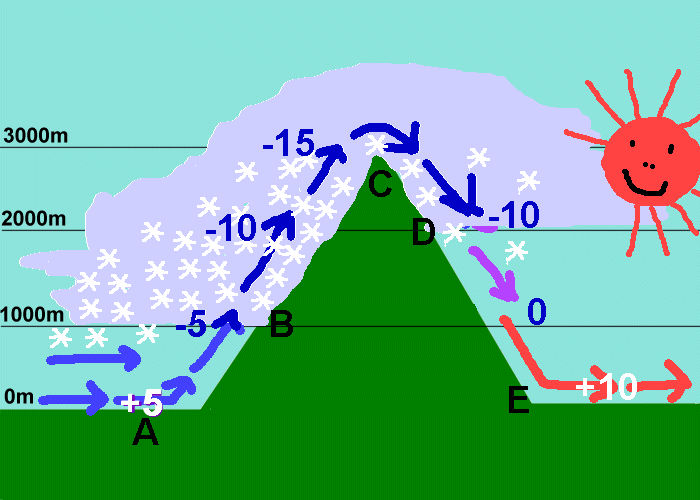| Back to Back Issues Page |
 |
|
Blowin' in the Wind, Issue #006 - What makes these special winds blow? May 1, 2004 April 30, 2004 |
Howdy,Valley and Mountain Winds - How many ways can you say Chinook?When valley and mountain winds blow upward over a mountain range, the pressure goes down and it expands adiabatically , that is without losing any heat, but it gets cooler anyway. Because the same amount of heat spreads over a greater volume. If the air is moist, rain will condense out of the air and leave the water vapour’s latent heat behind, which can be very significant. What happens on the other side of the mountain? That same air comes back down, except it is much drier and it contains all that latent heat from the water vapor. We find it very warm when these winds go. Note the temperature increase below. 
May I have a word with you?These type of valley and mountain winds happen all around the world, naturally the people have different words for it.1) Foehn - General term for warm dry wind blowing downwards on the lee (downwind) slope of a mountain range. More specifically, this word and its variant, föhn, pertains to the Alps. A couple more general terms about valley and mountain winds might be of interest here. Anabatic winds – Wind blowing uphill because of daytime warming. Katabatic wind – Wind blowing downhill because of cooling.
|
| Back to Back Issues Page |